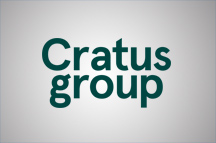It’s 12 months to the day when we count the results of the next London Local elections. Last week’s results from county and mayoral races paint a grim picture for Labour.
The Reform surge, the rehabilitation of the Lib Dems, plus swings to the Greens – if replicated exactly – would spell disaster for London Labour in 2026. But as we all know, London is different and has often resisted national trends (see 2010 and 2014). But the scale of the trends we’ve seen evidence in last week’s election are too great for London to completely escape their effect.
The two byelections in London last week confirm that the next year will be tough going for Labour in the capital.
The Greens gained a seat in Herne Hill from Labour in a ward they’ve represented previously. In Redbridge, Labour managed to hold on to their seat in Hainault by one (never let anyone tell you voting doesn’t make a difference!) but on a significant swing to the independent who mustered nearly 1 in 3 votes.
In the eyes of many Londoners, Labour are now the party for cutting welfare domestically and failing to stand up for human rights overseas. This hits both sidis of Labour’s coalition of low-income social housing tenants and internationally conscious liberals.
London is Labour’s to lose
My emerging theory of electoral politics in the 2020s is thus:
People are now primarily motivated to vote for whoever they believe will inflict the most pain on the party they hate the most.
The above is especially the case if the party voters most despite is anywhere close to wielding any power because people are hurting. The cost-of-living crisis hasn’t ended, public services are creaking, and housing poverty is abundant – especially in the mixed housing areas Labour need to win elections in London.
Voters want the politicians in charge to experience the same pain they are via the ballot box. Unfortunately for Keir Starmer, at the 2026 electoral cycle most London voters will have Labour in charge nationally, regionally and locally.
Long term outlook
The by-elections don’t suggest a Labour apocalypse in London but small swings to the Lib Dems, Greens and Independents can quickly turn strong Labour boroughs into more marginal and less confident ones.
The result last week were bad for the Conservatives because 2021 (the height of the vaccine rollout success) had them at a high. However the 2022 election when London lasted voted the Conservatives were battling partygate and cost of living had stared to bite. If the Conservatives receive just as many votes as they did at their 2022 duldrums and Labour see similar loses to last week, the blue team make gains just by standing still.
What comes next?
As soon as January arrived, I detected a strong shift of focus among London Labour towards May 2026. This focus will be redoubled after last week.
The party is progressed with candidate selections and that should be completed by September. After this point any boroughs with slim, or medium sized Labour majorities will become difficult places to do business.
The Conservatives will be influenced by their own challenges with Reform and there fortunes of their Leader – this is the element most difficult to predict.
The Lib Dems will look to consolidate in places where they made constituency gains such as Wimbledon in Merton – a borough that electorally is starting to look more and more like Kingston and Sutton. But the party will eye up reclaiming and expanding enclaves in boroughs they used to compete in (Haringey, Islington, Lambeth and Southwark).
The Greens will need to consider resources, not spread themselves too thin, and think longer-term. The Greens especially should view the 2026 elections as the spring broad to 2030 which could be their significant breakout year in London.
The time for London Labour councils to be bold and not worry about upsetting people is over. Unfortunately for them, this comes exactly the same time we will see progression of further planning reform; something Keir Starmer had said will inevitably cause some upset.
The next twelve months’ political and policy battles (both inter- and intra-party) will be a focus of Cratus in London. Do get in contact if you want to understand more about how they might affect you.












